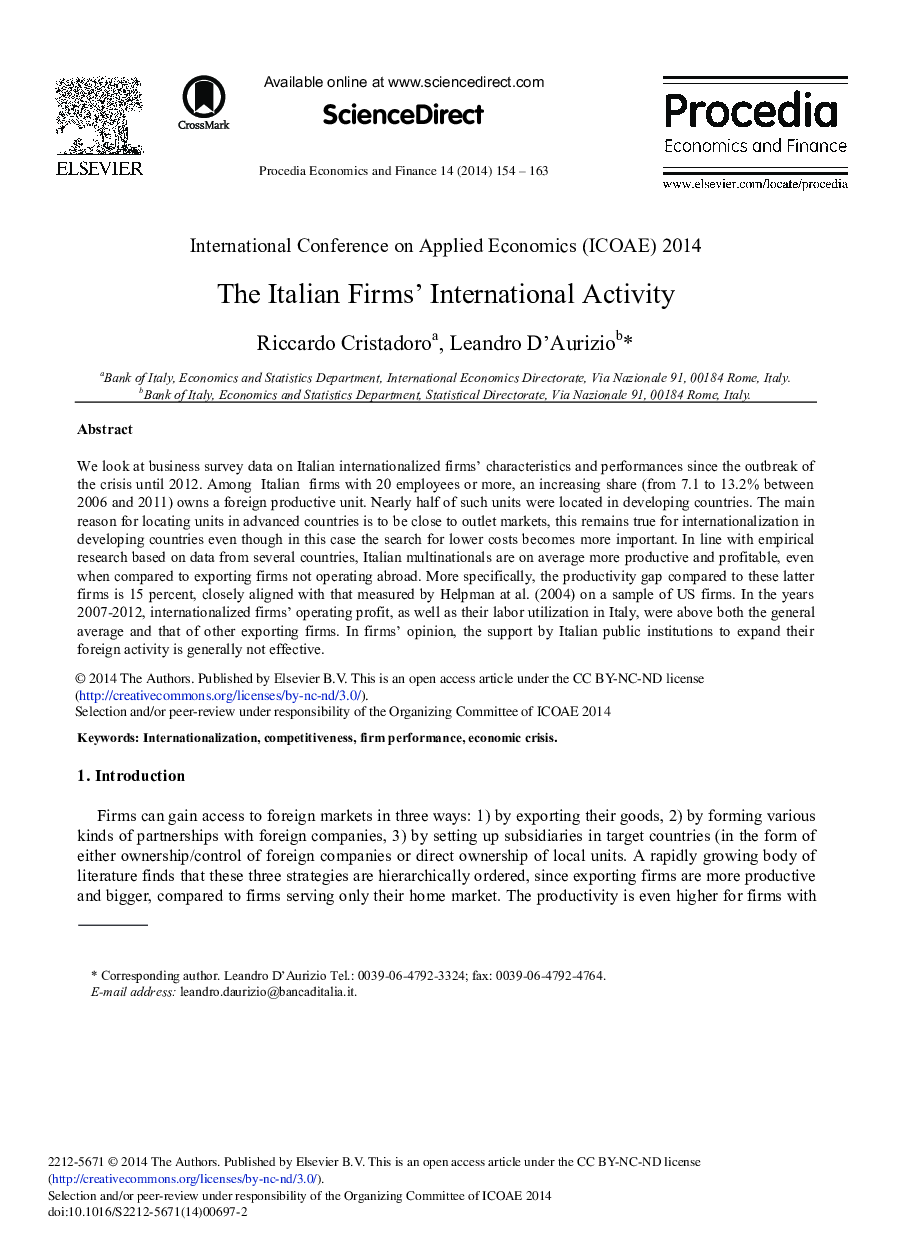| Article ID | Journal | Published Year | Pages | File Type |
|---|---|---|---|---|
| 981589 | Procedia Economics and Finance | 2014 | 10 Pages |
We look at business survey data on Italian internationalized firms’ characteristics and performances since the outbreak of the crisis until 2012. Among Italian firms with 20 employees or more, an increasing share (from 7.1 to 13.2% between 2006 and 2011) owns a foreign productive unit. Nearly half of such units were located in developing countries. The main reason for locating units in advanced countries is to be close to outlet markets, this remains true for internationalization in developing countries even though in this case the search for lower costs becomes more important. In line with empirical research based on data from several countries, Italian multinationals are on average more productive and profitable, even when compared to exporting firms not operating abroad. More specifically, the productivity gap compared to these latter firms is 15 percent, closely aligned with that measured by Helpman at al. (2004) on a sample of US firms. In the years 2007-2012, internationalized firms’ operating profit, as well as their labor utilization in Italy, were above both the general average and that of other exporting firms. In firms’ opinion, the support by Italian public institutions to expand their foreign activity is generally not effective.
